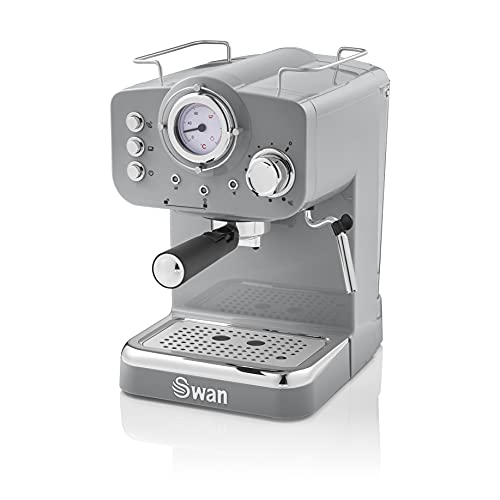Should You Buy an Espresso Machine?
Espresso machines require a higher degree of temperature and pressure than your typical coffee maker. They also make an intense and full-bodied cup of coffee.
You'll want a machine that has two boilers that allows you to make steam milk and espresso simultaneously. This is a major improvement over most single-boiler espresso machines.
Features
Making a cafe-quality espresso at home required the use of a lot of skills, but newer machines have made it possible for novices to pull off a great shot. One of the key features is the pressure gauge, which lets you check the level of water pressure in the pump as it operates. This can help to prevent the channeling that can cause weak shots. It's typically found on higher-end models.
Pre-infusion is a crucial feature. It helps ensure that all the grounds are completely saturated with water, which is essential to extract the coffee. It's also available on more expensive machines, and minimizes the risk of burning the coffee.

Whether you want to buy an automatic or semi-automatic machine is a different consideration. A fully automated machine is foolproof and lets you make milk drinks and espresso at the push of an button. However these machines are expensive and might not be to your taste if you prefer to be involved in grinding, tamping or milk steaming.
You can choose semi-automatic machines that include the bean hopper and grinder for a more personal experience. These machines have a more traditional appearance and let you manage the espresso process, including grind settings and temperature. They are available at an affordable price, however they require more work from the user.
Cost
There are a lot of options when it comes to choosing an espresso machine. The decision is based on how you intend to use it and which features are important to you. In general, having more features will result in a higher cost. You might also want to consider if you would like the ability to begin and stop the brewing process by hand or If you prefer an automated system.
have a peek at these guys come with an espresso portafilter, a milk container and a portafilter which can be connected manually. They require regular cleaning of the portafilters and containers for milk. They also generally require descaler treatments every few months to ensure they are in good shape. The manufacturer of the product will determine this. certain models have built-in water filters which help reduce hardness and improve taste.
Professional espresso machines usually come with dual boilers that allow you to brew and steam milk at the same time. This saves time and effort, and it will ensure that each function is heated at the correct temperature. Having a professional-grade espresso machine at home will make it easy to create delicious cappuccinos, lattes, flat whites and other drinks.
Certain espresso machines allow you to control the amount of coffee ground, the setting of the grinder and tampering pressure manually. This gives you a barista-like experience at home. These machines are more expensive than semi-automatic ones but they're a great option for people who enjoy the experience of making coffee.
Types
If you're planning to purchase or lease an espresso machine or lease it, you need to consider the alternatives carefully. A leased machine will require less upfront cash, but you'll be tied to an agreement that could increase the cost of maintenance in the future. You'll have to pay more upfront, but your equipment will be yours to keep.
The type of espresso maker you select will depend on the kind of coffee you're serving and your requirements. The majority of models come with steam wands, which can heat and froth milk for cappuccinos or lattes. Many models include a removable dishwasher-safe jug that can be used to make large batches of coffee and iced drinks.
There are models that are completely automated, that grind, measure and tamp your beans, and use pre-measured pods as an added benefit. They are the ones that score best in Lab tests for their ease of use but they are more expensive than a semi-automatic or manual model.
There are single and multi-boiler espresso machines that are more stable in temperature than other machines that can provide an consistent and flavorful espresso. But they require more counter space and will cost more.
Maintenance
Your coffee will taste better if you maintain your espresso machine properly. Regular cleaning and descaling also prolongs the life of your espresso machine. In addition, cleaning regularly will stop the accumulation of coffee oils that are rancid, which can alter the taste of your espresso.
Giorgio suggests that you look for a machine with a removable brew group and an easy-to-clean drip tray. He says that this will save your time and money over the long haul by reducing your need to clean the drip pan, aswell in avoiding the added cost of a separate milk frother.
You should also consider an espresso maker that has a high water pressure, which will help you achieve an even extraction of flavor and a rich crema. A good machine will be able to achieve an average pressure of nine bars.
Take note of the amount of space available in your kitchen and whether you're planning on pluming it. If you're limited with cabinet space, think about buying an portable model or a drip-free model that can be used with no need to be connected to the water line. It will also allow you to avoid the inconvenience of having to empty an empty waste container each time you use a model that is drip-free. Make sure that you purchase an espresso maker with a water tank which is easy to fill, take out and clean.
